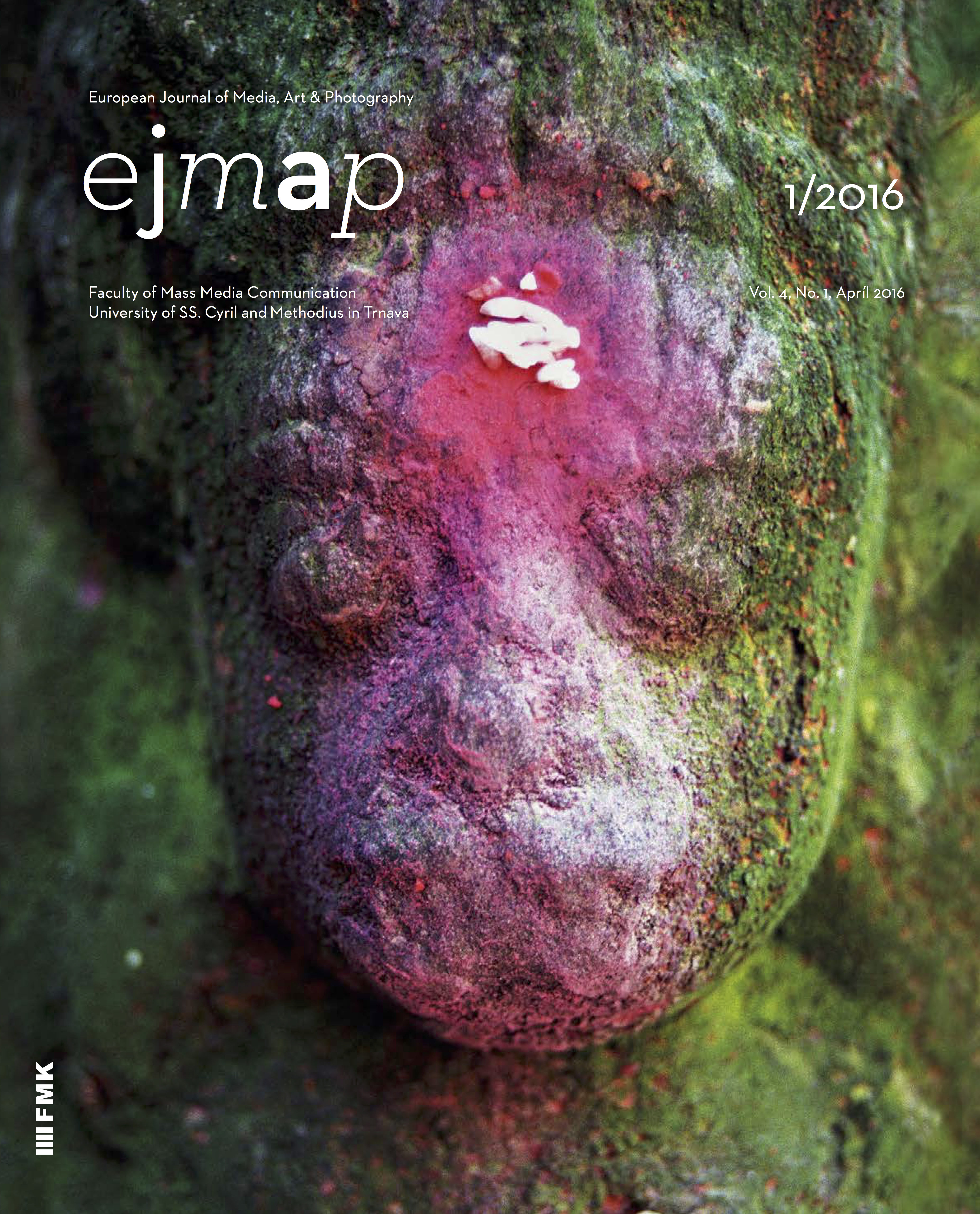
We kindly inform you that, as long as the subject affiliation of our 300.000+ articles is in progress, you might get unsufficient or no results on your third level or second level search. In this case, please broaden your search criteria.

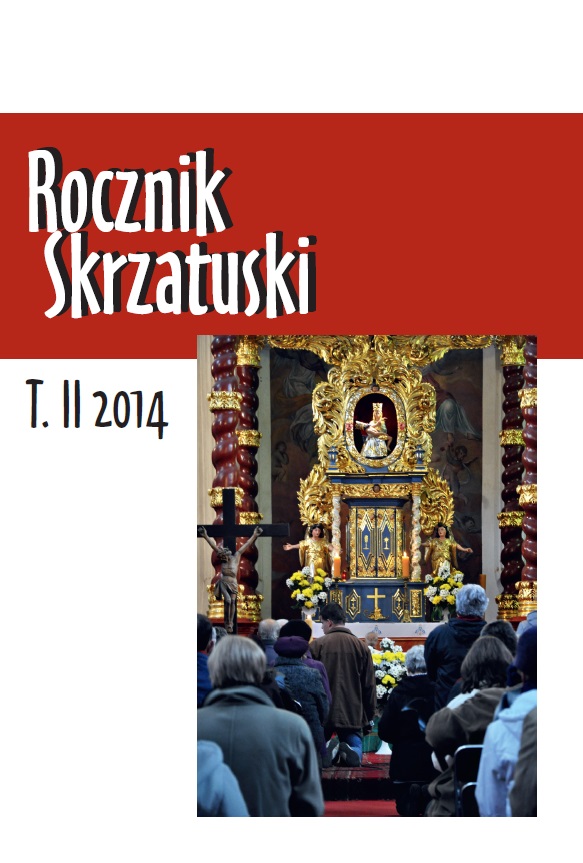
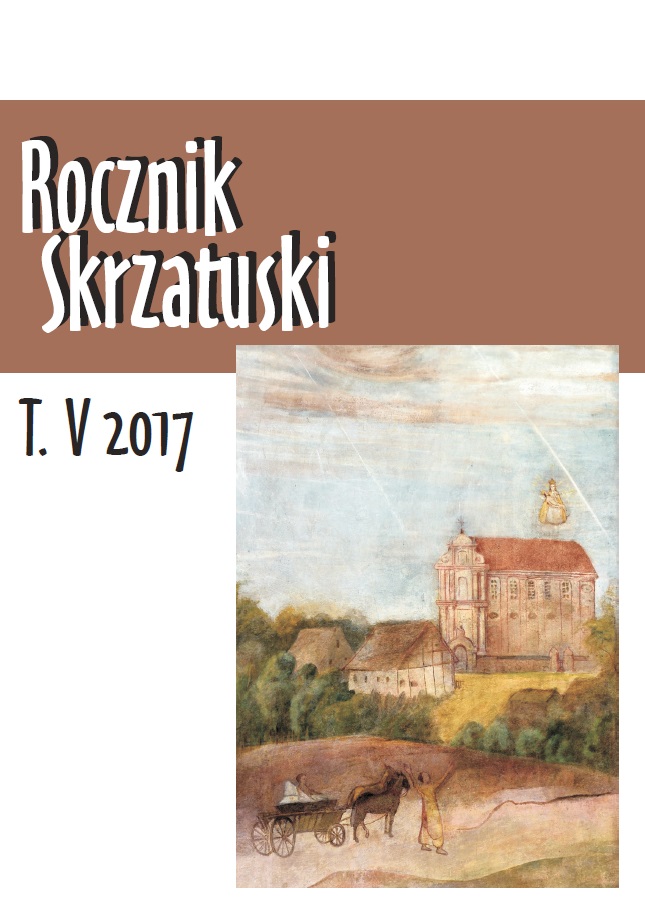
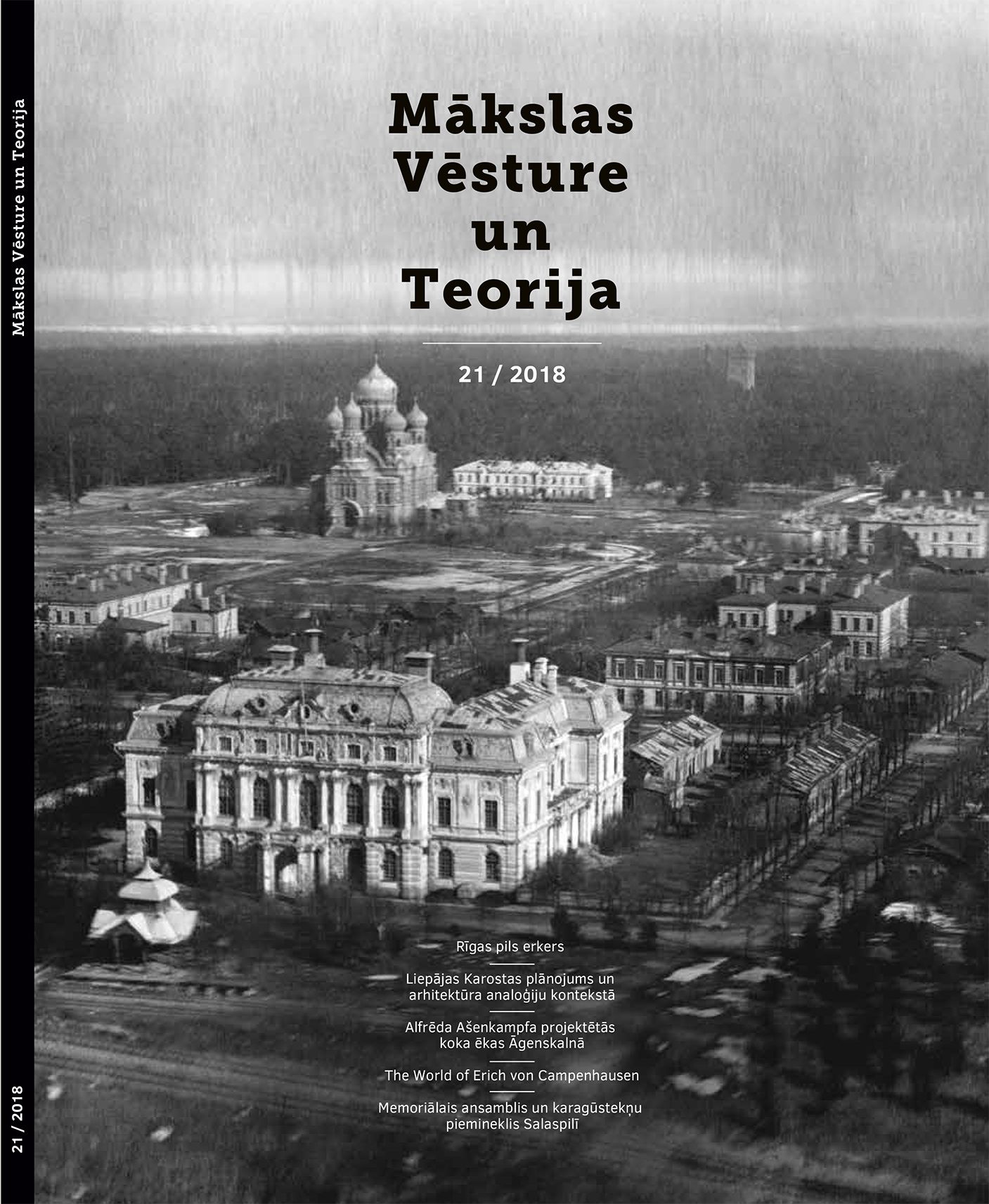
The review examines the edition of Estonian history of art: Eesti kunsti ajalugu. Kd. 6: 1940–1991: I osa (Tallinn: Eesti Kunstiakadeemia, 2013); Eesti kunsti ajalugu. Kd. 6: 1940–1991: II osa (Tallinn: Eesti Kunstiakadeemia, 2016).The ambitious six-volume project of the history of Estonian art was launched in 1999, and the two-part volume examined here is the largest addition to the series.The richly illustrated series is published in Estonian; however, quite substantial English summaries (28 pages in part I, 31 pages in part II) allow also foreign readers to grasp at least a broad outline of the facts, structure and methodology
More...
In the late 19th – early 20th cc. the Russian imperial authorities were concerned with the fast expansion of the photography. As a result, the public administration undertook efforts to get the new technology under the censorship control. The aim of the article is to reveal the theory and practice of the governmental regulation of photography in the Russian empire. Basing on the wide range of archival sources, the author uses traditional methods of the historical study to describe the photography censorship in Russia and employs the approach of microhistory to find out how the censorship affected the everyday life of professional and amateur photographers. The lack of the studies devoted to the relationship between the public authorities and photography in the Russian empire determines the scientific novelty of the paper. From the early 1860ties, both private persons who owned cameras and commercial photographic studios were placed under surveillance of the inspector of publishing facilities and bookstores. Professional photographers were obliged to put their names on all images they produced and keep an account of all their clients. Any photographic activity outside the studio required a special permission of the local authorities. Only members of the photographic societies were allowed to take pictures everywhere in Russia (with an exception of military objects and borderlands) having no certificate from the local governor’s office. Taking and publishing pictures of the ruling dynasty members and their residences required a special permission as well. The censorship controlled sharing of the photographic reproductions of the fine art works. The paintings, which (from the censor’s perspective) either propagated revolutionary and separatist ideas or threatened the reputation of the monarchy and Orthodox Church, were prevented from exhibiting. The local authorities used to confiscate the photographic reproductions of such paintings. As far as erotic materials were banned completely, the censors paid special attention to any photographic images depicting nudity. The author comes to conclusion, that despite the regulations were strict, the whole system of the state control over the photography was rather ineffective. Having no single law defining benchmarks for evaluating the pictures or even a list of the images banned throughout an empire, the censors used to act selectively. Furthermore, in big cities, such as Kyiv, they were too busy to control dozens of photographic studios and amateur photographers. As a result, both photographers and local civil servants ignored most of the regulations.
More...
Taking into account the fact that such a complexity as the existence and continuity of „stećci“ is difficult to be analysed in a large spatial and temporal frame, it has been suggested that a multidisciplinary international scientific institution be formed with a single documentary archive. The city of Mostar has been suggested as the center of this scientific centre, which carries regional as well as global benefits. The necessity of the interdisciplinary research of „stećci” has been emphasised in a short review on some of the contemporary scientific research interests. Furthermore, the inevitable process of the protection of the cultural heritage and documents with an accent on the photography has been pointed out too. With quite a number of details, the importance of archaeology has been accentuated on some examples, as well as the importance of the history of art and iconography as disciplines that are the basis for the scientific research of „stećci“. The connection and the modernity of the scientific research of „stećci“ has been clearly outlined in a framework of the European medieval issues, which additionally justifies the suggestion.
More...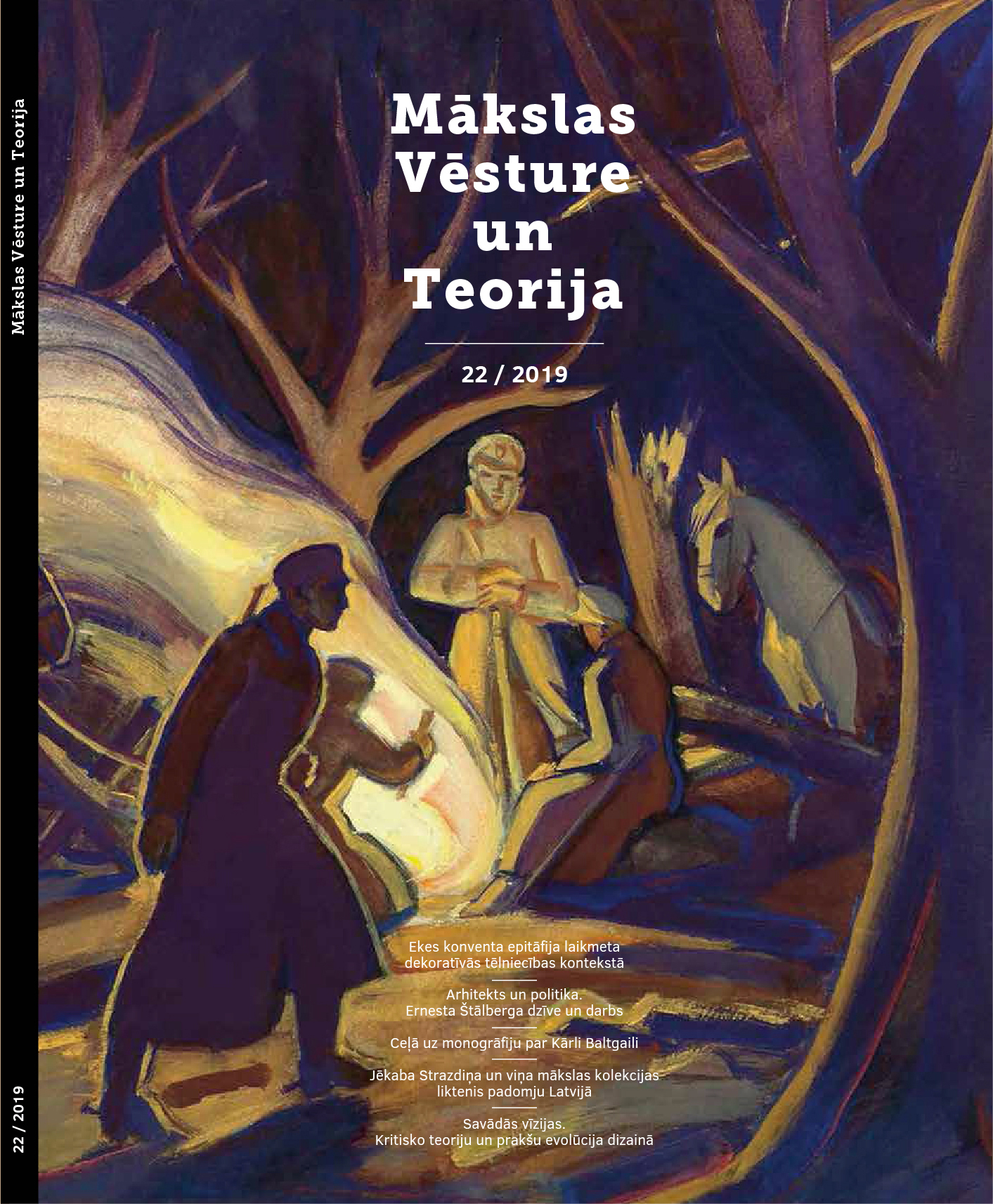
The article deals with the conference “State (Re) construction and Arts in Central and Eastern Europe. 1918–2018” that took place at Royal Castle in Warsaw in 19–21 November 2018. Organised by Nicolaus Copernicus University in Toruń, Institute of Art History and Centre for Europe of the University of Warsaw, the event in embraced a broad spectrum of themes from the impact of the First World War on arts to contemporary methodological challenges in art history.
More...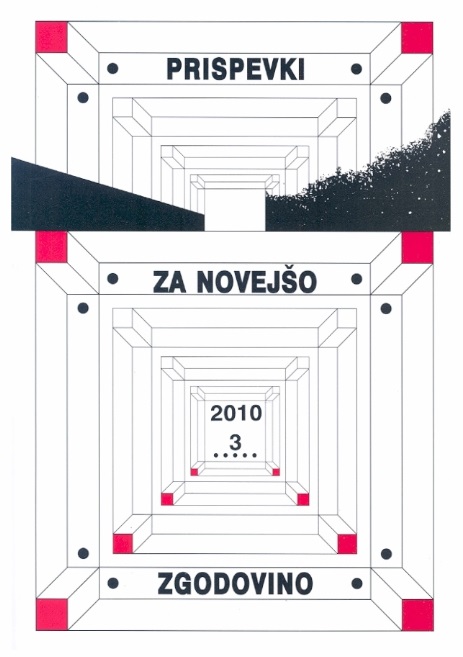
From 1943 until the end of World War II, Franjo Veselko (1905-1977), professor of history and geography, was a partisan photographer and organiser of the Photojournalist Service. Since April 1944 until May 1945 he managed the photography section of the Propaganda Commission within the Presidency of the Slovenian National Liberation Council and taught at the partisan gymnasium (secondary school) in Črnomelj. In this period he made around 2000 diverse photographs, transcending thè mere documentary level, which places Franjo Veselko at thè very peak of partisan photography. With his theoretical knowledge in the field of propaganda photography, Veselko wrote several guidelines about what the partisan photojournalists should focus on and how to take photographs in the field. Veselko belongs among the key Personalities in the field of organising the partisan Photojournalist Service.
More...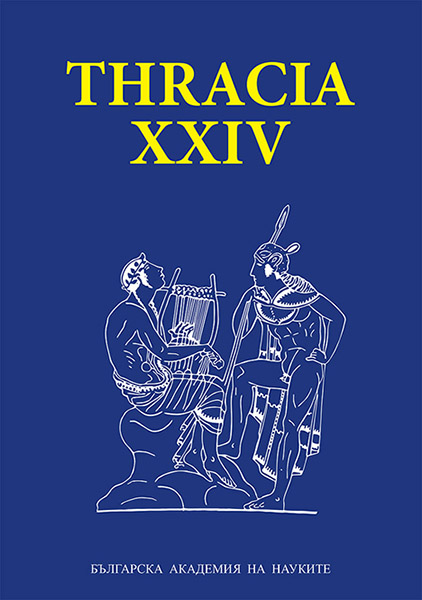
… Тhat when it comes to history, she – I remind you – is a muse named Clio and that this Clio has the majestic nobility to be Human Knowledge (Фол А. 1997. История на българските земи в древността до края на III в. пр. Хр. София, 1997:296/ Fol, Al. History of Bulgarian territory in Antiquity to the end of III BC. Sofia, 1997: 296). …what History holds back becomes fatefully more important than what has been said or even written by her (Fol, Al. Thracian Culture: The Said, The Held Back. Sofia, 1998: 8). The last monographs Man in the Types of Time, Man in the Types of Space, and Orphica Magica I by Master Fol, are a demonstration of his creation/participation/presence in the drama produced by Clio. This participation/presence is expressed in writing in the director’s notebook of the Drama which is not doomed to fall off the stage due to absence of co-participating viewers, albeit in a chamber ensemble. In it, the notebook, step by step, has been developed in detail the dramaturgical setting of the acting characters and their behaviour in the different scenes of the ritual and the requisites employed to communicate with God in order to attain the essence of immortality. The author Alexander Fol introduces the main characters of the play and the logical accents in the nine languages and the references they use. These languages do not describe. They display the image, the name, the number, the tone, the matter, the shape, the colour, the movement and the function according to the model of Herodotus’ and of the Samothracian tetrad (Fol, Al. Orphica Magica I. Sofia, 2005: 51). After reading these Books/Dramas, the question arises compulsively: What has been said is already a fact, but what have you held back, Master, and why? Have you closed the door for the uninitiated or is there still a narrow crack?
More...
The review of: Miran Pavlin: Ljubljana 1941: pričevanja fotoreporterja. Modrijan, Ljubljana 2004, 262 strani, ilustr.
More...
The paper is dedicated to one of the largest megalithic sanctuaries in the Balkans. The Rocky Peak of Mount Zlatovrh near Prilep in the Republic of Northern Macedonia is sacred. Archaeological monuments testify to millennial cult continuity: the megalithic sanctuary dating back to the Bronze and Iron Age is inherited from the architectural temple of Apollo. Later, an early Christian basilica was built here, and in the Middle Ages it was inherited from the Treskavec Monastery. Intangible cultural heritage also testifies to a particularly important cult site with millennial history.
More...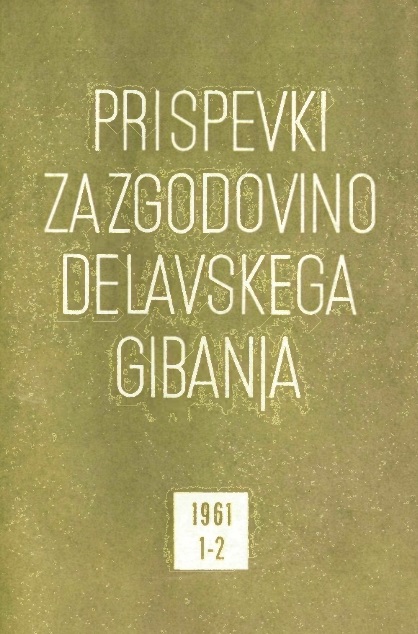
Nacionalni Institut za zgodovino osvobodilnega gibanja v Italiji je v svoji reviji ; Il movimento di liberazione in Italia«, letnik 1960, štev. 61, objavil oceno, treh knjig in sicer italijanske »Pensaci, uomo!«, ki sta jo pripravila Piero Caleffi in Albe Steiner in je izšla 1960 v Milanu, nadalje v Varšavi izdane knjige pod naslovom »Ni sni o pozabili« in pa »Zbornika fotografij iz narodnoosvobodilnega boja slovenskega naroda«, del II, knjiga i, ki je izšel leta 1959 v Ljubljani. Zadnji oceni je napisal Arrigo Pacchi.
More...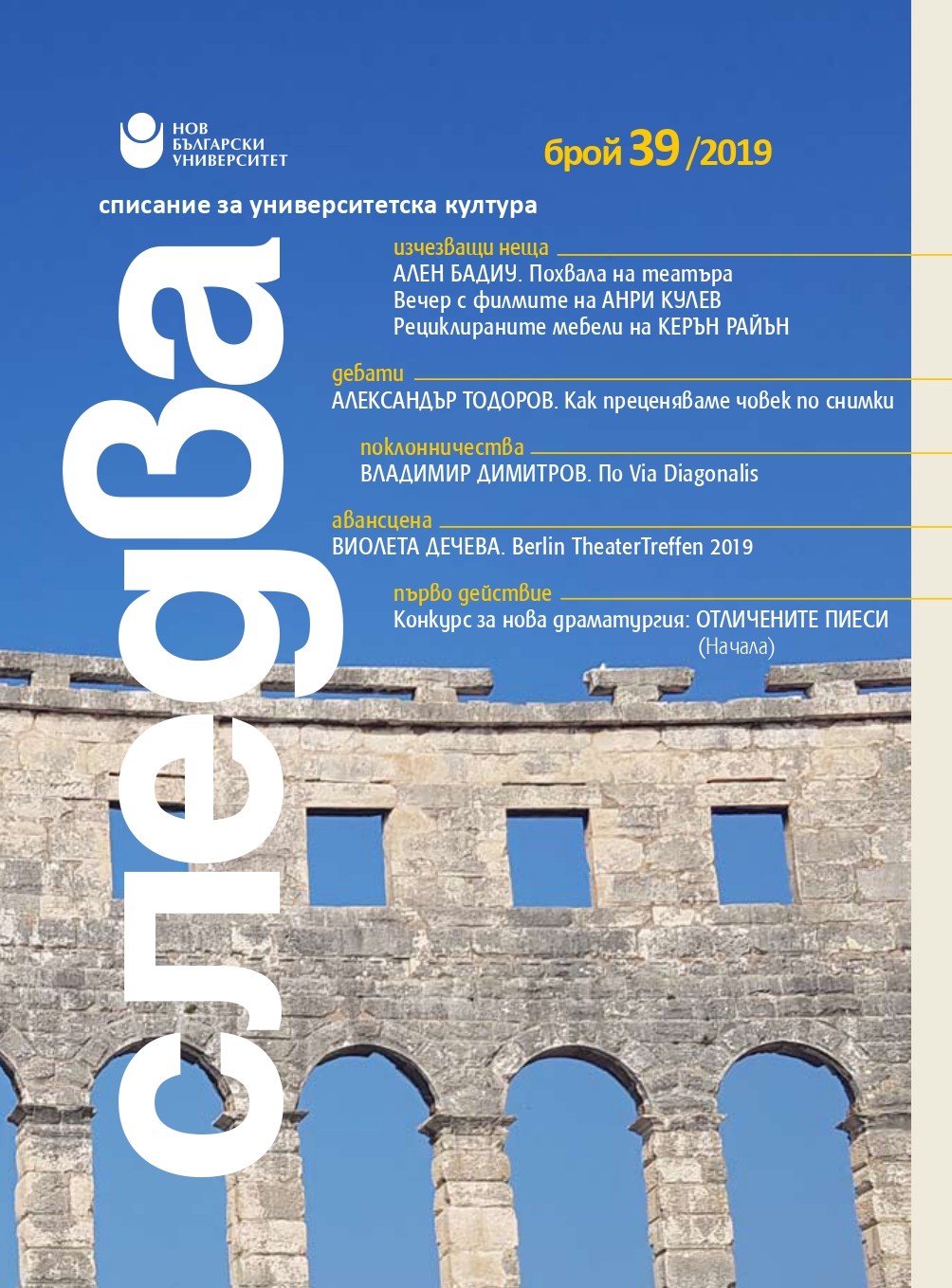
The study presented in this article is part of the topic The Impact of Image Banks on the Advertising Photography in Bulgaria, which in turn is part of the doctoral thesis Trends in the Development of Bulgarian Advertising Photography in the Period 2000 – 2017. The purpose of the research is to explore the trends in the selection of an advertising image, i.e. when the preferred images are from image banks and when they are custom-made. The survey will present the number of photographs in Bulgarian advertisements taken from an image bank and the amount of custom made ones. Another issue considered is at what stages of the working advertising process stock images appear. What is also discussed is whether the stock image generating industry is detrimental to customized advertising photography and if it provides additional business opportunity for advertising photographic studios. Through analysis and in-depth interviews with art directors, custom commercial photographers and stock image photographers, the research will attempt to present and systemize specific trends in the working process of advertising agencies on the Bulgarian market and how this affects the advertising photography in Bulgaria. The term advertising photography will be used in the sense of custom photography created for a particular advertising project, while the term stock photography will be used to define a photograph created without a specific assignment and of general commercial nature.
More...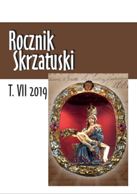
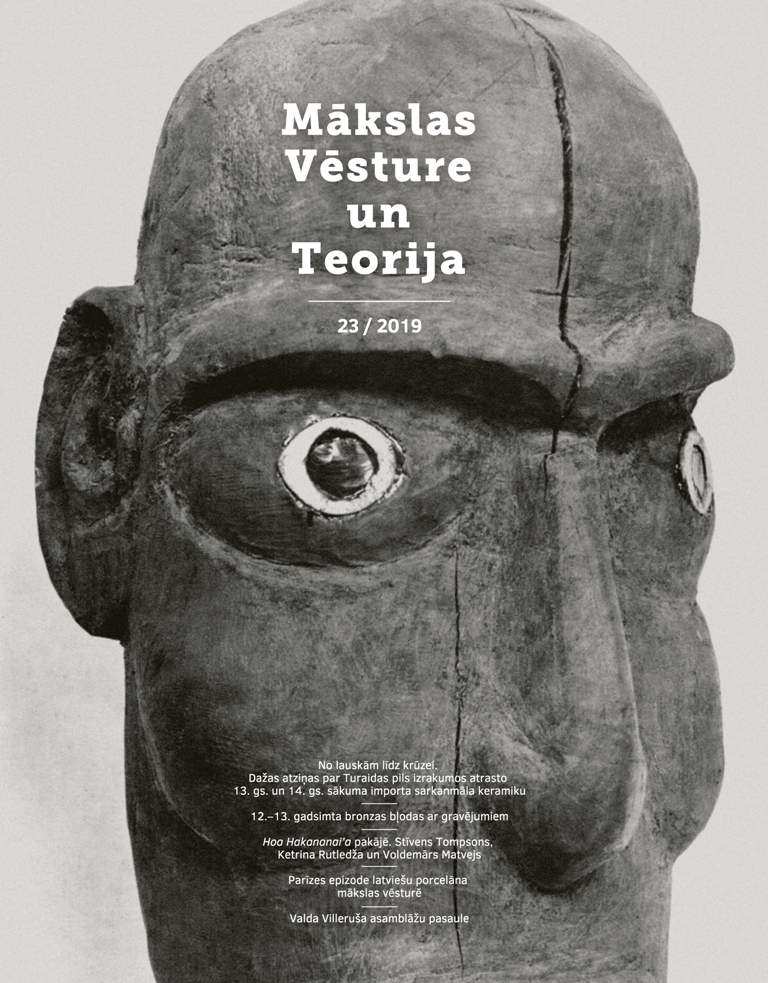
The review examines the collective monograph "Desmit epizodes 20. gadsimta mākslā Latvijā = Ten Episodes in Art of the Second Half of the 20th Century in Latvia" (Riga: Latvian National Museum of Art, 2019) authored by a team of leading Latvian art historians and evalued as an important contribution to the study of recent past.
More...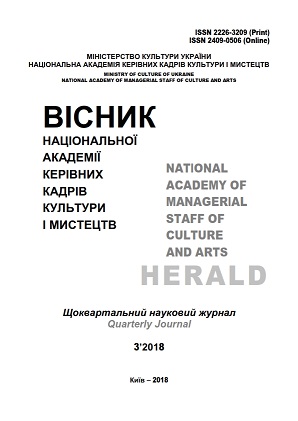
The purpose of this research is to study the peculiarities and details of the appearance of the girls from the «cover» of the twentieth century, in particular: what was different and what was common in the images of the Ukrainian and foreign masters while working on the cover of books and magazines as well as to determine the functions of women’s image in Ukraine and other countries. The methodology of the research is based on the use of cultural, structural, comparative, and analytical methods of study of female images in the works of illustrators, book publishers and magazines of the 20th century. Scientific novelty consists in expanding the notion of female images in the cover pictures of books, illustrations for articles and fashion magazines of the twentieth century. A comparative analysis of the images of Ukrainian girls and foreign women gives us an idea of the different levels of development and self-sufficiency of women of that time. Conclusions. The article examines the stereotypes of women's images and forms a special type (or rather types) of representation of the female body on the covers. It studies «traditional images» of women, the subtleties of appearance of female images on magazine covers and identifies relevant images for drawing portraits on the cover.
More...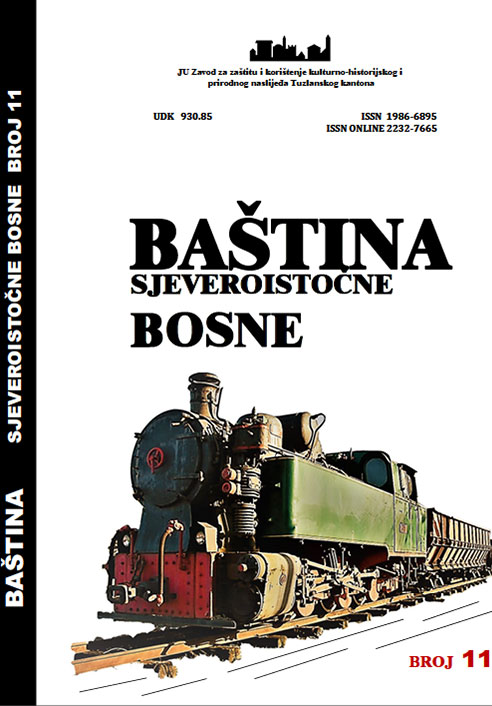
Kreka is a settlement near Tuzla created by the development of industry initiated by the Austro-Hungarian administration in Bosnia and Herzegovina. In parallel with the development of industrial buildings, residential settlements in Kreka were being built, known as Columns or Workers' Colonies. Simultaneously with the development of the industry and settlement of Kreka, recording of characteristics of Kreka began with phototechnics, ie. cameras. The first photographs of the Kreka area were recorded in 1894. The photographs show the industrial infrastructure of Kreka and the residential units in Kreka in the years 1894 and 1895. The basis for recording the Kreka area during the Austro-Hungarian administration is a photo album with photographs of Kreka and Tuzla, owned by the Skrobic family of Tuzla. The photo album was edited by Stjepan Skrobic, a construction engineer who has spent most of his professional career in Tuzla and where he has a legacy. Photographs were made in sephia tone, measuring 17 X 12 cm in a cartoon frame on a cardboard substrate, measuring 20.5 X 15.5 cm. Kreka photographs are also available at the Austrian National Library in Vienna and were recorded in 1898. The photographs from the library have very similar features to those of the Skrobic family, and were made using the same technique, in the same format.
More...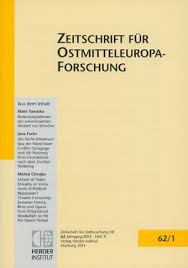
There are still to this day a large number of gaps in post-war Memel history in the Lithuanian SSR due to the fact that the subject was neglected prior to 1989 for ideological reasons. Until then, the history of German minorities had remained taboo along with accounts of the mass emigration out of the USSR. As part of a survey and collection project, the Institute of Baltic History and Archaeology in Klaipėda collated private image sources that contain material relating to cultural and social spheres within the investigation period, with the aim of closing and discussing historiographical gaps. The photographs document private strategies that existed beneath the level of large-scale political decision-making. They provide insights into recreational past times, religious customs, private environments as well as relationships between genders and generations. A further theme highlighted by the collection is the mass emigration movement that took place from 1958 to 1960. In the second section of the text, specific images are introduced and discussed. The aim of including these concrete examples is to demonstrate the extent to which private photographs may qualify as objective factual sources in developing our understanding of everyday social history.
More...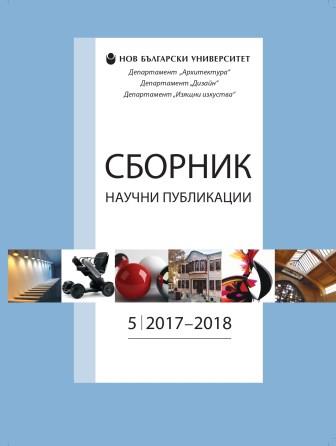
The streets in the historical centers of the cities of Western Europe and the world are of particular interest in the 1960s and 1970s. They set out a number of important principles: (a) preserving the historical substance; (B) increasing public functions and preserving the most valuable architectural and urban features; (C) arrangement of pedestrian zones - PZ; (D) turning PZ into entertainment and trading areas; (E) turning PZ into areas of culture; (E) creating uninterrupted public spaces at the ground level.Modern city space solutions develop further these trends and put the quality of life and its social, economic, political and enviramental aspects of urban spaces in the focus of interest of designers and all urban planners. Political aspects include: (a) planning tools; (B) financial security; (C) communication and (d) monitoring, and social aspects: (a) organizing events, typical places, museums, street artists; (B) creating attractive meeting venues; (C) walking and just hanging out, enjoying the free time; (D) children's entertainment; (E) an environment of social equality. Enviromental aspects include: (a) air quality and hygiene; (B) quality of the urban environment and cleanliness; (C) noise pollution; (D) freedom and enjoyment of movement (public and private transport, pedestrian and bicycle areas). The economic aspects of quality of life include: (a) revitalization of physical and spatial assets (quality, accessibility, efficiency to increase their competitiveness and value); (B) tourism (culture, heritage, shops, entertainment, specific places); (C) entertainment and leisure; (D) work (business, services, commerce, entertainment).
More...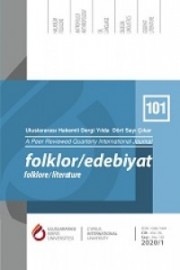
Digital Captivity. İklim Sanat, Ankara, December 6, 2018 - January 4, 2019
More...